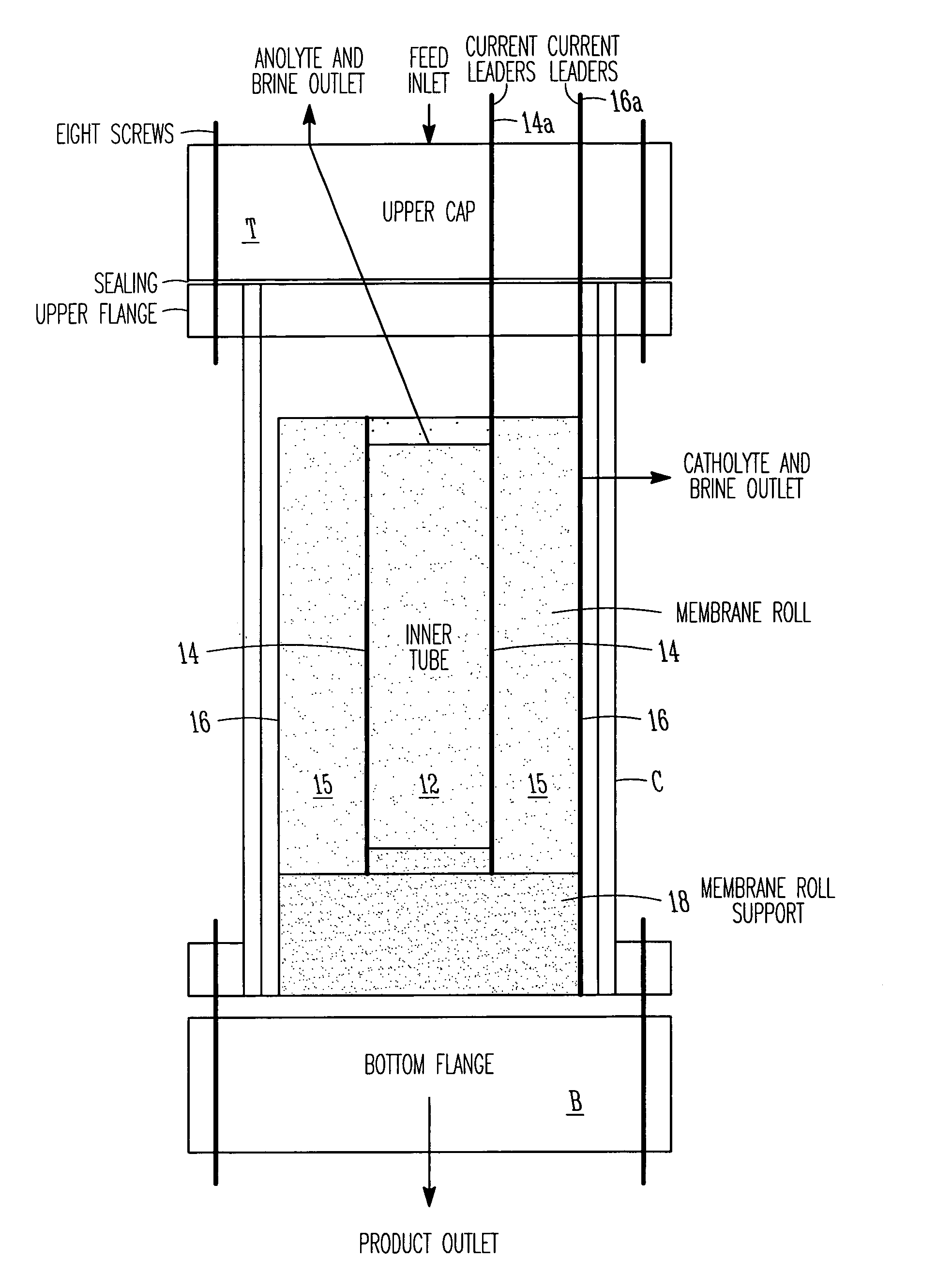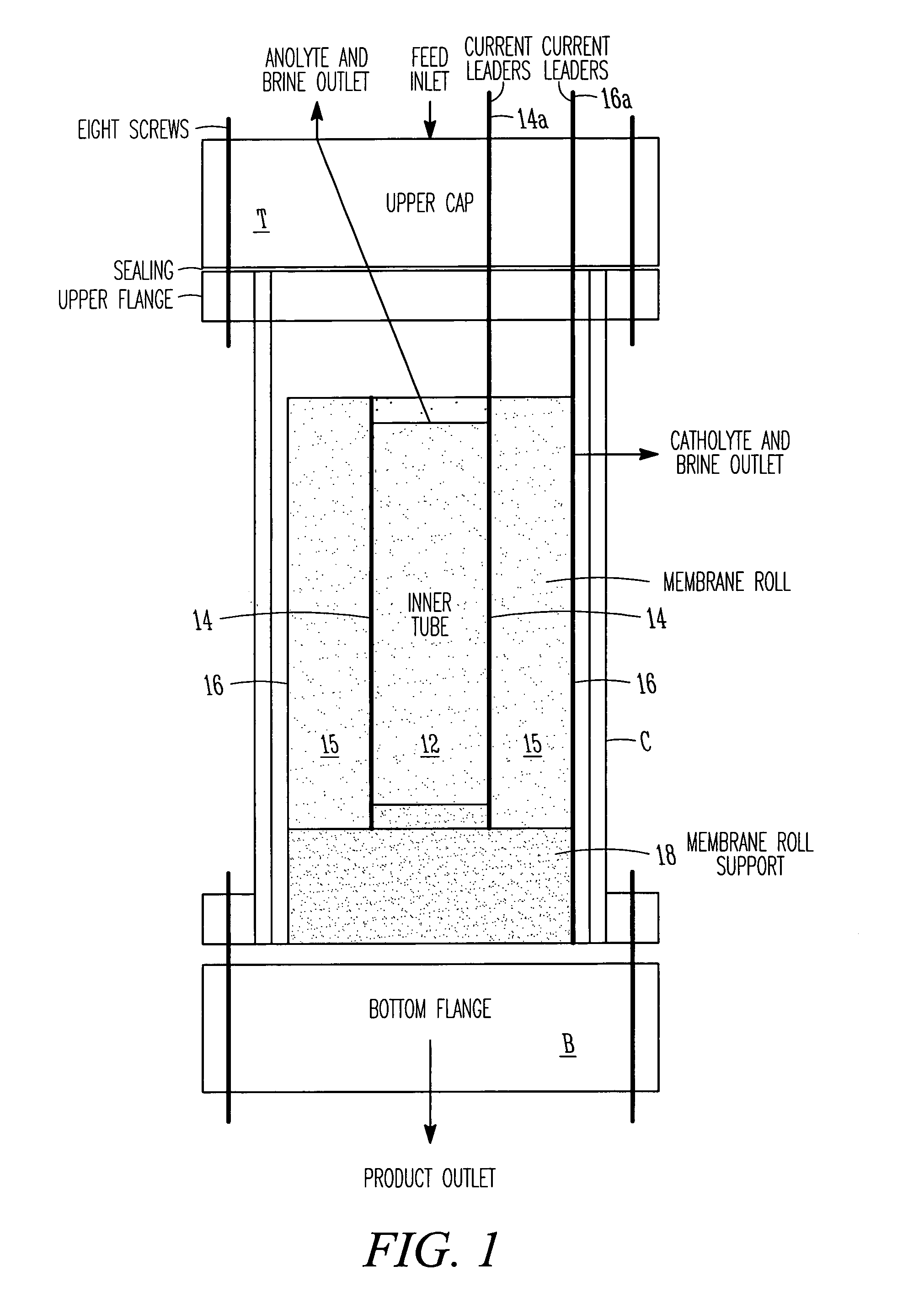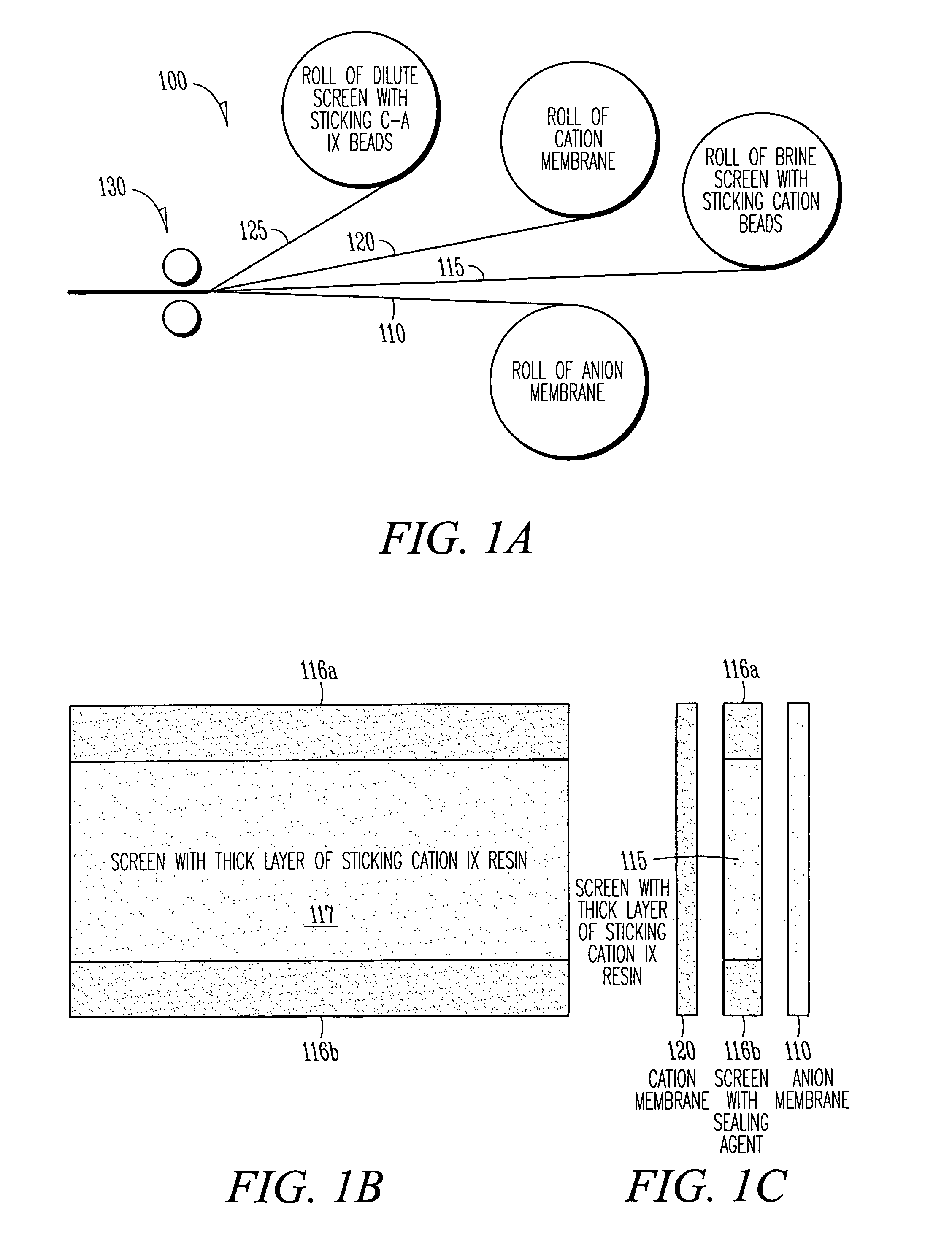Spiral electrodeionization device with flow distribution profiling
a flow distribution and electrodeionization technology, applied in the direction of filtration separation, lighting and heating apparatus, separation processes, etc., can solve the problems of affecting the efficiency or degree of treatment, prone to scaling, and needing to replace beads, so as to achieve the effect of preventing scale formation, enhancing removal of species, and sharpening the separation of differen
- Summary
- Abstract
- Description
- Claims
- Application Information
AI Technical Summary
Benefits of technology
Problems solved by technology
Method used
Image
Examples
Embodiment Construction
[0044]FIG. 1 is a schematic plan view of a first embodiment 10 of a cylindrical EDI apparatus in accordance with the present invention, showing general layout of components. The EDI apparatus 10 includes a housing illustratively comprised of a bottom flange plate B, a top flange plate T and a cylindrical body C that together define a generally cylindrical vessel or fluid-confining enclosing chamber. A membrane roll 15, of which several examples are described below, is wound around a central core 12 within the housing. Illustratively, a membrane roll support 18, the structure of which may take various forms, supports the membrane roll. An inner electrode 14 surrounds the central core 12, and is coupled to a first current leader 14a for connection to an external power source, and an outer electrode 16, coupled to a second current leader 16a, substantially surrounds the membrane roll 15. The membrane roll is wound in a spiral in the annular space between the two electrodes 14, 16. With...
PUM
| Property | Measurement | Unit |
|---|---|---|
| thickness | aaaaa | aaaaa |
| diameter | aaaaa | aaaaa |
| axial length | aaaaa | aaaaa |
Abstract
Description
Claims
Application Information
 Login to View More
Login to View More - R&D
- Intellectual Property
- Life Sciences
- Materials
- Tech Scout
- Unparalleled Data Quality
- Higher Quality Content
- 60% Fewer Hallucinations
Browse by: Latest US Patents, China's latest patents, Technical Efficacy Thesaurus, Application Domain, Technology Topic, Popular Technical Reports.
© 2025 PatSnap. All rights reserved.Legal|Privacy policy|Modern Slavery Act Transparency Statement|Sitemap|About US| Contact US: help@patsnap.com



